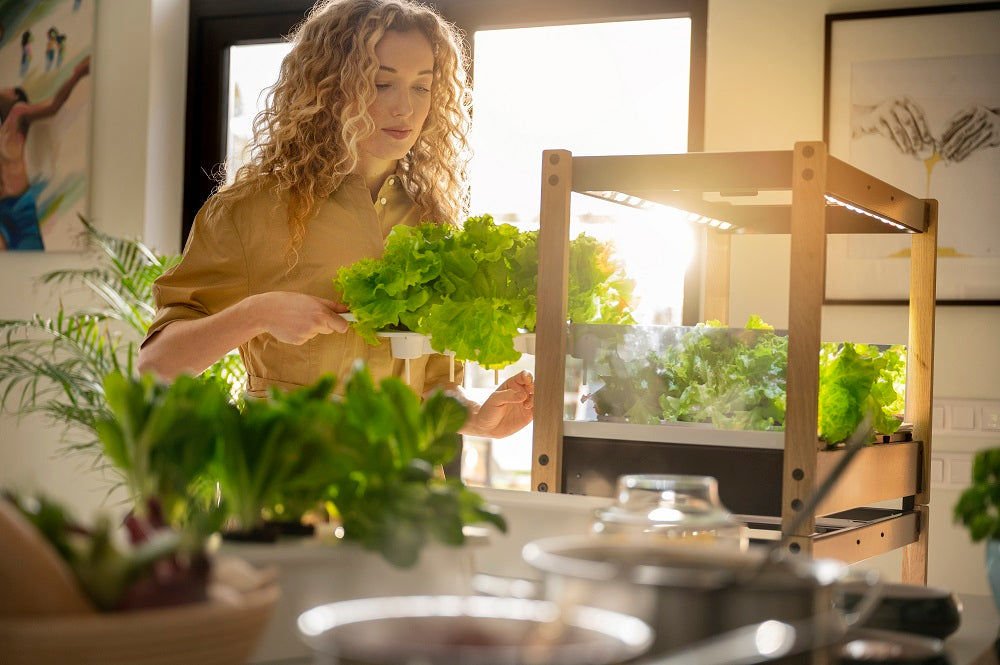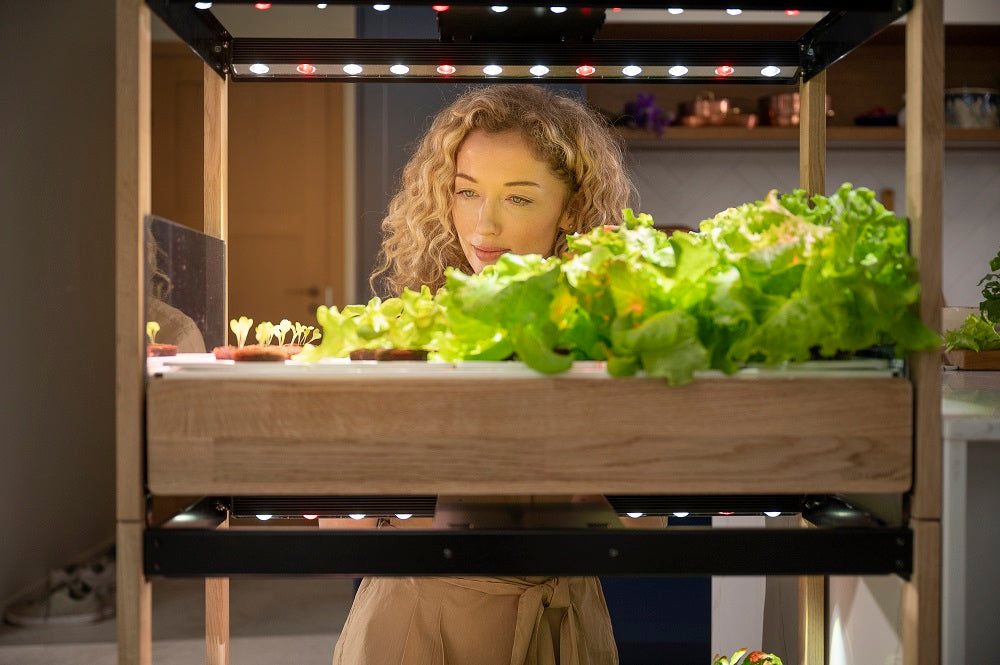News
How Climate Change Is Affecting Our Food Supply

We all like to complain about the weather. It's been too hot, too dry or too wet. And sometimes it also feels as if our whole lives are getting thrown off-balance. But what about the bigger consequences? What about climate change? How does it affect food production globally and does that mean we're all in danger of running out of food?
In this post we’ll take a closer look at the impact of climate change on food production and food security. We’ll also talk about how growing your own food can be a step in the right direction.
The devastating effect of extreme weather
The livestock industry is particularly vulnerable to the effects of climate change and extreme weather. While large-scale grain and vegetable farms have access to resources like irrigation, allowing them to adapt to changes in rainfall, animal farms are more exposed to the elements.
The industry is also at risk from the direct effects of extreme weather. Livestock can die during heat waves, and storms can destroy millions of animals, as happened during Hurricane Katrina in 2005. The storm drowned thousands of cows and pigs, devastated poultry operations and destroyed hundreds of oyster beds.

More recently in 2013, a severe storm hit North Dakota and its effects were felt even as far as the upper peninsula of Michigan. The storm had a devastating effect on the region's farmers and ranchers who rely heavily on the income from their crops and livestock to support themselves, their families, and their workers.
The livestock industry was particularly hard hit by the storm's frigid temperatures; ranchers in South Dakota alone lost an estimated 100,000 cattle during the storm. Cattle are especially vulnerable to cold weather because they can freeze to death when covered by wet snow for prolonged periods of time.
In 2018, heavy rain and snow storms caused significant flooding across the US Midwest. It’s estimated that Nebraskan farmers lost $440,000,000 worth of cattle. The flooding meant many farmers had to delay their spring planting too. When commodities such as corn are delayed, it has a ripple effect on food production. This can mean unpredictable prices for food and growing unrest over the availability of food.
Water scarcity

While most of the world's attention has focused on rising temperatures, water scarcity is one of the most serious consequences of global warming. Water shortages will raise food prices and make it more difficult to sustain crops and livestock.
By 2025, more than half of the world's population will be living in areas where water is scarce at least part of the year. Farmers will need to irrigate growing crops with less water than they use today, causing crop yields to fall--in some cases by as much as 50 percent.
Water scarcity also leads to higher prices for meat, eggs and dairy products because animals drink large amounts of water and eat grains that require irrigation to grow. If farmers cannot produce enough grain for animal feed at an affordable price, there will be fewer animals to supply meat, eggs and dairy products to consumers.
Compounding the issue, 1 in 10 people lack access to safe water. That’s a staggering statistic, especially when we consider that water demand is projected to increase 55% by 2050.
Higher temperatures and rising CO2 levels

In a warmer world, plants have more carbon dioxide to use for photosynthesis but often less water to work with. While crops such as rice, wheat and maize are likely to see an initial boost in yields from the extra CO2, this effect is unlikely to last long once temperatures increase and water becomes scarcer.
As our climate changes, extreme weather events will become more prevalent. This means that the weather patterns we depend on for reliable food production will no longer be reliable.
Global warming is also one of the drivers of migration and conflict around the world. Where food is scarce or too expensive, people are forced to leave their homes and move elsewhere – often into already crowded cities or across borders into other countries. As populations grow and demand for food increases, competition for dwindling resources will grow, fuelling local conflicts over land and water.
Unpredictable growing seasons
One of the largest climate-related effects on crop yields is unpredictable growing seasons. It’s not just how hot it feels outside that is important—it also matters how long those temperatures last.
An earlier spring, for example, allows farmers to plant their crops earlier in the year and gives them more time for them to grow during warm months. But if this early spring is brought on by a warming climate, that could have serious consequences for agriculture. That's because crops have become adapted to the specific weather they need at different stages of development, but they'll soon reach their limits.
The timing between when crops are planted and harvested becomes off balance. This means they have less time to mature before the frost comes.
Growing your own food as a solution
While it’s highly unlikely you’ll be able to grow all of your own food, you can still contribute to a more sustainable world by growing some of your own food at home. Click & Grow smart indoor gardens can help with that. Here’s how:
Saving water
Smart gardens use 95% less water than traditional agricultural methods. Capillary precision irrigation (CPI) is used to distribute water and nutrients in regulated amounts. To help avoid overwatering, the garden’s water float indicates when the garden needs to be watered and when it’s full.
By using smart gardens to grow their leafy greens, Click & Growers saved 7.5 million liters of water in 2021 alone. In fact, all of the Click & Grow leafy greens grown in 2021 took 396,913 L of tap water. Growing the same amount of leafy greens with traditional methods would have taken 7,938,260 L irrigation of water. So, 7,541,347 L water was saved by using Click & Grow. That’s enough to fill 3 olympic sized swimming pools.
Less food waste
When you grow food in your smart garden, you can control the amount of food you grow, helping you waste less food. You can harvest food when it’s ready to be harvested, leading to fresher tasting produce that’s more nutritious.
Less food miles & CO2 emissions
When you grow your own food as a family, you’re helping to reduce the distance food must travel to reach your family’s table and cutting down on the number of miles you have to travel to buy food from markets. Less car journeys mean less CO2 emissions.
Furthermore, consider this: lettuce produced & consumed within the conventional supply chain (using efficient, industrial hydroponic technologies and sold unpackaged) results in 24.11 CO2 Eq. emissions, compared to just 9.35 CO2 Eq. from Click & Grow. This is when waste and nutritional value are taken into account.
It's a sad fact that the impacts of climate change on agriculture and food production are likely to be felt most severely in poor regions, which have contributed least to the problem. Luckily, in many cases you can do something about it.
By growing your own food, you can reduce the impact of climate change on the food that you eat and become less reliant on world markets, which greatly impacts your ability to feed yourself. Plus, growing your own food is also a great way to get in touch with nature and increase self-sufficiency—two things that are becoming increasingly important in today’s world.


